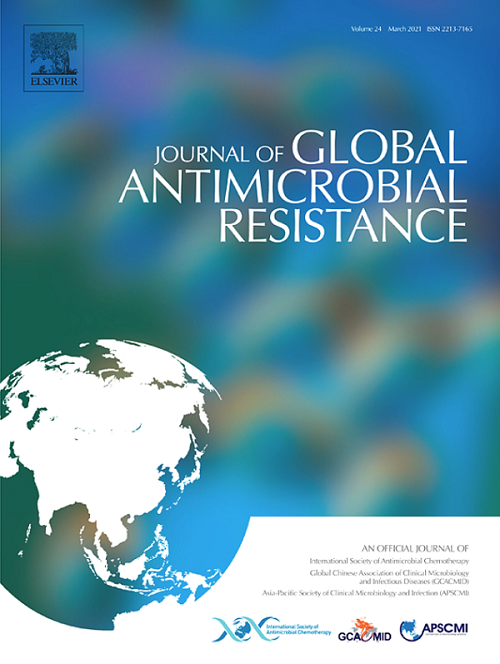Resistance to colistin and various antibiotics in non-typhoidal Salmonella
IF 3.7
3区 医学
Q2 INFECTIOUS DISEASES
引用次数: 0
Abstract
BACKGROUND
Non-typhoidal Salmonella has been reported as one of the four major global causes of diarrheal diseases by the World Health Organization. In recent years, Salmonella strains resistant to both antibiotics used in treatment and colistin have been increasing worldwide, and therefore resistance is monitored on a country-by-country basis. In this study, it was aimed to determine the minimal inhibitor concentration (MIC) values of antibiotics frequently used in the treatment and of colistin and to investigate plasmid-mediated mcr genes that play a role in colistin resistance.
METHODS
MIC values for colistin (COL), ampicillin (AMP), trimethoprim-sulfamethoxazole (SXT), ciprofloxacin (CIP) and ceftriaxone (CRO) were determined by broth microdilution method in 83 Salmonella (70 S. Enteritidis, 13 S. Typhimurium) isolates from patients with gastroenteritis in accordance with the European Committee on Antimicrobial Susceptibility Testing recommendations and mcr-1 and mcr-2 genes were investigated by multiplex PCR method.
RESULTS
Resistance to COL, CIP and AMP were found 13.25%, 4.81% and 1.2%, respectively. All Salmonella strains were susceptible to SXT and CRO. MIC ranges and MIC50-MIC90 values were found 0.25-8 mg/L and 1-4 mg/L for COL; 1-32 mg/L and 2-2 mg/L for AMP; 0.06-0.5 mg/L and 0.125-0.125 mg/L for SXT; 0.008-0.5 mg/L and 0.016-0.03 mg/L for CIP and 0.03-0.5 mg/L and 0.06-0.125 mg/L for CRO, respectively. The mcr-1 and mcr-2 genes were not detected in Salmonella isolates.
CONCLUSIONS
High-level and multi-resistance were not observed in our isolates. While resistance was generally low, the highest resistance rate was observed against colistin.
求助全文
约1分钟内获得全文
求助全文
来源期刊

Journal of global antimicrobial resistance
INFECTIOUS DISEASES-PHARMACOLOGY & PHARMACY
CiteScore
8.70
自引率
2.20%
发文量
285
审稿时长
34 weeks
期刊介绍:
The Journal of Global Antimicrobial Resistance (JGAR) is a quarterly online journal run by an international Editorial Board that focuses on the global spread of antibiotic-resistant microbes.
JGAR is a dedicated journal for all professionals working in research, health care, the environment and animal infection control, aiming to track the resistance threat worldwide and provides a single voice devoted to antimicrobial resistance (AMR).
Featuring peer-reviewed and up to date research articles, reviews, short notes and hot topics JGAR covers the key topics related to antibacterial, antiviral, antifungal and antiparasitic resistance.
 求助内容:
求助内容: 应助结果提醒方式:
应助结果提醒方式:


